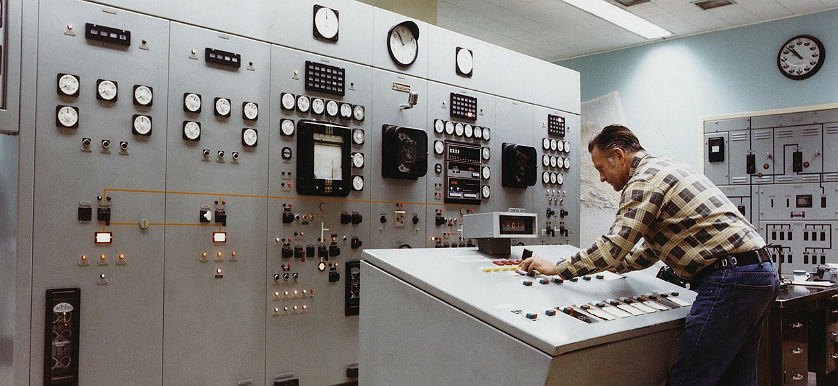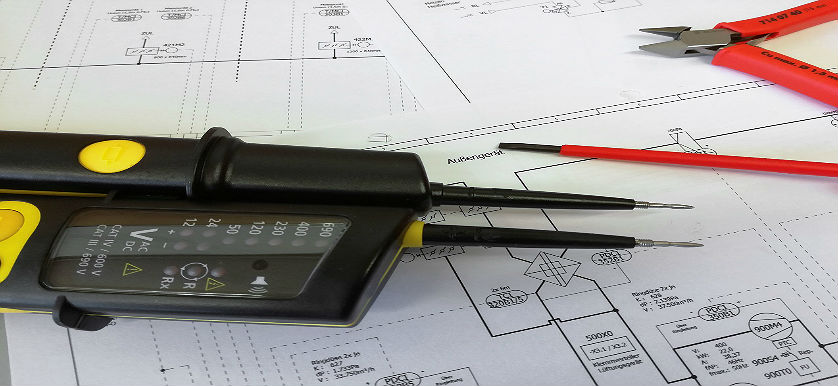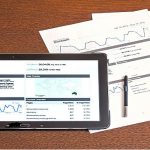Performance Benchmarking in the Electricity Utilities Sector

In the last century, the electric power industry has played and still plays a critical role in the development of our societies on many levels. Electricity, as a resource, is indispensable to factories, businesses and commercial establishments, to private homes and to certain modes of transportation as well.
Throughout the 20th century, strong industrialization has occurred in both the U.S. and Europe, and all the way through Asia, and the electricity industry has strongly contributed to this development phase in terms of technological progress and human prosperity.
Considering today’s high-tech economies, characterized by a high dependence on affordable and reliable electricity, the electric power utility industry, which encompasses the generation, transmission, distribution and sales of electric power, has experienced a remarkable growth and it still maintains a strong pace in terms of turnover for electric providers (only in 2015, in the U.S. the sector was worth almost $ 400-billion) and investments aimed towards a reliable distribution of this resource throughout its network.
However, despite the profitability obtained from the consumption of electricity by private households and commercial and industrial facilities, industry providers have operated in accordance to an ever-increasing demand for electricity.
This demand is characterized by long lasting peak demand periods and strict national and international regulations related to gas emissions, reliability, consumer protection and investment policies that are restructuring the boundaries of the sector. Furthermore, until the end of the 1990s, the nature of the segment, as a natural monopoly, has had limited competitiveness.

The Challenges of the Electric Power Industry
Electricity providers face challenges that can be grouped into the following areas:
- Security of electricity supply in response to an increase in demand;
- Aging infrastructure;
- Climate change and environmental footprint pressures;
- Global trends towards urbanization;
- Raising operational and distribution costs;
- Importance of fuel diversity in ensuring reliable supply of electricity;
- Changing demographics.
Given the more static and harsher settings of the industry, electricity providers worldwide have opted and created frameworks for best practices with the objective of achieving better profitability in the long term.
For this reason, the framework of performance management “Energy Efficiency Program, Best Practices” has been developed by the U.S. Environmental Protection Agency (EPA) with the aim of setting a specific array of best practices.
These best practices aimed to make electricity power a more cost-effective tool for all customers classes, by designing and delivering energy programs that optimize reliability and budgets, based on current performance assessments of the distribution network and generation equipment.
In other areas of the world, as in south east Asia, a management framework called “Electricity Governance Initiative” developed by the World Resource Institute (WRI), in association with the Indian Prayas Energy Group, has been enacted with the aim of pursuing performance improvement of the electricity sector of 4 countries: Thailand, India, Indonesia and the Philippines.
The KPI Institute’s Benchmarking Study
The KPI Institute has conducted a secondary benchmarking research called “Key Performance Indicators for Electricity Utilities. Utilities Performance Benchmarking Report Series 2017”, that includes 23 companies located throughout five continents. All the 257 Key Performance Indicators (KPIs) documented are clustered in five main domains:
- Customers (e.g. % Domestic Customers, % Customer satisfaction, # Complaints concerning the price of electricity, % Complaints considered legitimate, % First contact resolution rate) – with 68 KPIs documented;
- Operations (e.g. # Net electricity generated, # Energy generated from coal, # Miles of underground lines, # Reconnections, # SAIDI) – with 90 KPIs documented;
- Environment (e.g. # C02 emissions (mill tones), # Waste for recycling, # Mercury emissions, % Waste for disposal by landfill, # SO2 emissions from power generation) – with 24 KPIs documented;
- Human Capital (e.g. # Senior Management, % Female in board of directors, % Disabled employees, # Average hours trained per employee, % Female employees) – with 68 KPIs documented;
- Corporate Governance (e.g. # Board of directors meetings, # Deliberations, # Management suggestions) – with 7 KPIs documented.

The report is dedicated to the analysis of non-financial KPIs applied to the electricity industry, under the above-mentioned areas of expertise, reporting results for the 2011-2015 period.
The Operations domain is the most documented cluster, including 90 KPIs out of the 257 reported. Likewise, the indicators are divided into 5 main areas:
- Electricity production (e.g. # Renewable production, # Net electricity generated);
- Power sources (e.g. # Energy generated from nuclear power, # Thermal power);
- Transmission network (e.g. # Transformer substation, # Electricity sold);
- Electricity supply (e.g. # Temporary Disconnections, # New connections);
- Electricity interruptions (e.g. # SAIFI (load factor) , # SAIFI).
The Bottom Line
Benchmarking can be considered a fundamental requirement for electric utilities organizations, as it allows them to determine their baseline performance and to identify possible gaps in performance with respect to best in class utilities players, while being able to define best practices and comparing them to other processes.
However, for a full-applicability of the benchmarking report, all the members involved in the project must clearly define the initiatives and must have a well-structured methodology to back them up. If these steps are not correctly assessed, the results may be unclear or incomplete.
Finally, performance transparency and cross-utility comparisons must be fostered to allow a continuous analysis of data among electricity firms involved in the generation, transmission, distribution and sale of electricity.
Benchmarking Professional – the more you know!
The KPI Institute, through its Center for Performance Benchmarking and Utilities Performance Labs, has initiated a large series of secondary benchmarking projects to reveal the key indicators used in the utility sectors. This report, called “Key Performance Indicators for Electricity Utilities”, is the third published out of the 6 Utility Benchmarking Reports in the series, and is now available to the public.
Moreover, considering the complexity of designing a Benchmarking study and all the related challenges associated with it, The KPI Institute’s training program, Certified Benchmarking Professional, is designed to fill the gaps you might have or to provide complete knowledge on how to conduct a benchmarking study.
For further information, feel free to download any of our webinars that are centered around the concept of Benchmarking.
Image sources:

Tags: Benchmarking, Electricity performance, Strategy






flanges manufacturer
| #
Thanks for sharing, this is a fantastic blog.Much thanks again. Much obliged.
Reply
gigabyte
| #
I loved your blog.Much thanks again. Really Great.
Reply
today himachal news in hindi
| #
Fantastic article.Really thank you! Cool.
Reply
character ai
| #
Thanks-a-mundo for the article post.Much thanks again. Cool.
Reply
character ai
| #
Thank you ever so for you article post.Really thank you! Much obliged.
Reply
laifen hair dryer
| #
I cannot thank you enough for the blog post.Really looking forward to read more. Great.
Reply
橙新聞
| #
Thank you for your article.Really looking forward to read more. Cool.
Reply
instagram pro
| #
Major thankies for the post. Really Cool.
Reply
talkie ai
| #
Thank you for your article post.Thanks Again. Awesome.
Reply
专业论文润色
| #
Thanks so much for the blog.Much thanks again. Keep writing.
Reply
chai ai
| #
Enjoyed every bit of your blog.Thanks Again. Awesome.
Reply
nsfw ai
| #
A round of applause for your article.Much thanks again. Really Cool.
Reply
nsfw ai chat
| #
Really enjoyed this article post.Thanks Again. Cool.
Reply
Best overnight period underwear
| #
wow, awesome post.Much thanks again. Much obliged.
Reply
free crypto trading signals
| #
Really enjoyed this blog post.Thanks Again. Fantastic.
Reply
andaman nicobar tour package from delhi
| #
Awesome blog.Really thank you! Great.
Reply
rapala s type 50
| #
Very neat article post.Really looking forward to read more. Will read on…
Reply
flights to ibiza
| #
A big thank you for your post.Much thanks again. Great.
Reply
ceed preparation books
| #
Thanks-a-mundo for the article post.Really looking forward to read more. Cool.
Reply
dubai packages for couple from mumbai
| #
Looking forward to reading more. Great blog post.Much thanks again.
Reply
maldives holiday packages from india
| #
Thanks for the post.Much thanks again. Great.
Reply
why did you choose fashion design as a career
| #
Fantastic article post. Keep writing.
Reply
arena plus online
| #
Thanks-a-mundo for the blog. Great.
Reply
motphim com
| #
I really enjoy the blog article. Really Great.
Reply
Qingdao Baixi Industry
| #
I loved your post.Really looking forward to read more. Want more.
Reply
论文代写服务
| #
Enjoyed every bit of your article.Thanks Again. Fantastic.
Reply
GB WhatsApp
| #
Major thankies for the article post.Thanks Again.
Reply
Fouad WhatsApp
| #
Very good blog.Really thank you! Want more.
Reply
Descargar WhatsApp Plus
| #
Thanks-a-mundo for the post.Much thanks again. Really Cool.
Reply
FM Whatsapp
| #
Wow, great blog post.Much thanks again. Keep writing.
Reply
NSFW Generator AI
| #
This is one awesome article post. Fantastic.
Reply
Ai Anime generator
| #
I appreciate you sharing this article post.Much thanks again. Awesome.
Reply
home decor manufacturer in usa
| #
Say, you got a nice article.Much thanks again. Keep writing.
Reply
cycling clothing
| #
Wow, great post.Really thank you! Much obliged.
Reply
Ecwid Web Builder Review
| #
I cannot thank you enough for the blog article.Really thank you! Fantastic.
Reply
satta matka malamaal
| #
Enjoyed every bit of your blog post. Awesome.
Reply
satta matka tara kalyan
| #
Really appreciate you sharing this blog article.Really thank you! Want more.
Reply
hire maharaja tempo traveller in manesar
| #
Hey, thanks for the article post.Really looking forward to read more. Really Great.
Reply
car booking without driver in bangalore
| #
Thank you for your blog article. Want more.
Reply
mercedes benz coach bus on rent in manesar
| #
Appreciate you sharing, great post. Awesome.
Reply
sikkim darjeeling places to visit
| #
Say, you got a nice blog post.Thanks Again.
Reply
package of darjeeling tour
| #
Hey, thanks for the blog post.Really looking forward to read more. Fantastic.
Reply
hommar
| #
A round of applause for your blog article.Thanks Again. Fantastic.
Reply
香港現金網娛樂城
| #
wow, awesome blog.Really looking forward to read more. Keep writing.
Reply
Injection Machine
| #
Really appreciate you sharing this post. Much obliged.
Reply
custom clothing
| #
Say, you got a nice blog.Thanks Again. Awesome.
Reply
decision making meetings
| #
I think this is a real great blog post.Much thanks again. Want more.
Reply
teams ai meeting notes
| #
I cannot thank you enough for the post.Thanks Again. Want more.
Reply
ai girlfriend chat
| #
Awesome blog.Really thank you!
Reply
Vehicle Electronic Machine
| #
Great, thanks for sharing this post. Will read on…
Reply
ai sex chat
| #
Thank you ever so for you blog post.Thanks Again. Keep writing.
Reply
sex ai
| #
Im obliged for the article.Thanks Again. Want more.
Reply
keeper ai test
| #
wow, awesome blog. Great.
Reply
keeper ai test
| #
Im thankful for the article.Really thank you! Keep writing.
Reply
AI sexting
| #
Thanks for the article post.Much thanks again. Awesome.
Reply
Rizz App
| #
Thanks for the blog post.Really thank you! Keep writing.
Reply
character ai
| #
I appreciate you sharing this blog post.Much thanks again. Really Great.
Reply
ai anime
| #
Wow, great blog post.
Reply
porn ai chat
| #
Thanks-a-mundo for the article post. Will read on…
Reply
c.ai
| #
Thanks a lot for the blog article.Really thank you! Cool.
Reply
smash or pass ai
| #
Thanks again for the post.Much thanks again. Want more.
Reply
affordable custom shirts
| #
I really enjoy the article.Much thanks again. Awesome.
Reply
synthetic hair topper
| #
Enjoyed every bit of your blog post.Really thank you! Really Cool.
Reply
human hair hat wigs
| #
Great blog.Really looking forward to read more. Really Cool.
Reply
pinkie pie cosplay wig
| #
Major thanks for the blog article.Really looking forward to read more. Fantastic.
Reply
868 double wire fencing
| #
Wow, great blog.Thanks Again. Want more.
Reply
SLS Machinery Co.,Ltd
| #
Great article.Thanks Again. Really Great.
Reply
SLS Machinery Co.,Ltd
| #
Very informative blog article. Really Great.
Reply
优美之家
| #
I really enjoy the blog.Thanks Again. Really Great.
Reply
优美之家
| #
Say, you got a nice blog article.Thanks Again. Want more.
Reply
Honista
| #
Looking forward to reading more. Great blog article.Thanks Again. Keep writing.
Reply
ai girlfriend
| #
A round of applause for your blog article.Really looking forward to read more. Cool.
Reply
led light basketball display case
| #
Say, you got a nice article.Really looking forward to read more. Much obliged.
Reply
huddles
| #
Fantastic article.Really looking forward to read more. Want more.
Reply
香港現金網娛樂城
| #
Fantastic blog.Really looking forward to read more. Great.
Reply
best smart sleep mask
| #
Thanks again for the post.Really looking forward to read more. Much obliged.
Reply
sleep aid gadgets for relaxation
| #
I truly appreciate this article.Much thanks again.
Reply
Loro Piana yupoo
| #
Thanks-a-mundo for the blog.Much thanks again. Awesome.
Reply
pia proxy
| #
Thank you ever so for you article.Thanks Again. Cool.
Reply
telegram 中文包
| #
Thanks for the blog article. Awesome.
Reply
汉化telegram
| #
I really liked your article. Much obliged.
Reply
precision cnc services
| #
Very neat blog article.Much thanks again. Fantastic.
Reply
PCB manufacturing
| #
Very good article post.Much thanks again. Much obliged.
Reply
Jogo do touro
| #
Thank you ever so for you article. Awesome.
Reply
Point of sale system
| #
Really appreciate you sharing this post. Great.
Reply
马尔代夫 旅游
| #
Very good article. Fantastic.
Reply
马尔代夫酒店
| #
Thanks-a-mundo for the blog.Really thank you! Will read on…
Reply
slsmachinery
| #
I think this is a real great blog post. Keep writing.
Reply
SLS Machinery Co.,Ltd
| #
A round of applause for your blog post. Want more.
Reply
Thread rolling machine
| #
Very informative blog post.Really thank you! Cool.
Reply
京牌靓号
| #
I really enjoy the article.Really looking forward to read more.
Reply
nsfw anime ai
| #
I appreciate you sharing this blog.Really looking forward to read more.
Reply
dirty chat ai
| #
Major thankies for the blog article.Really thank you! Will read on…
Reply
ai waifu nsfw
| #
Very good post.Much thanks again. Really Great.
Reply
sex ai
| #
Im obliged for the blog.Really thank you!
Reply
character ai no filter
| #
Hey, thanks for the blog. Want more.
Reply